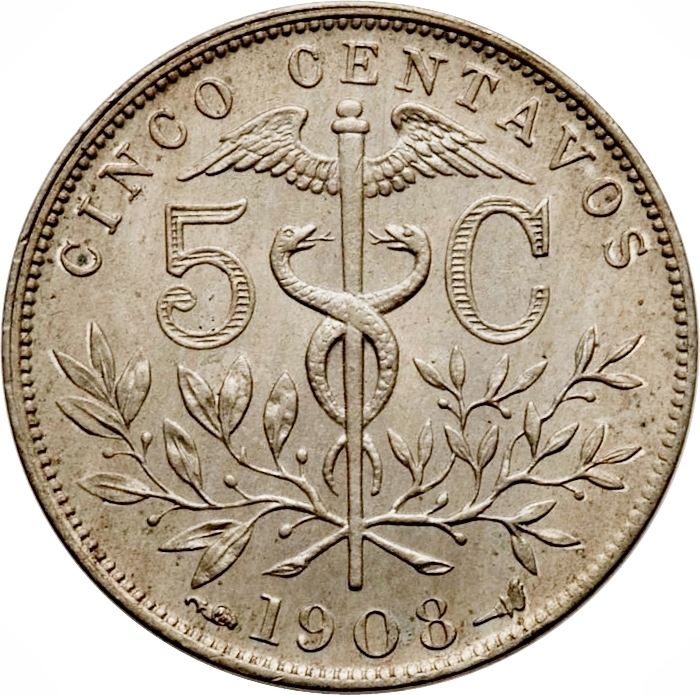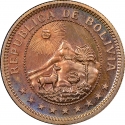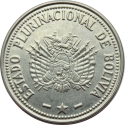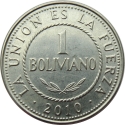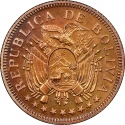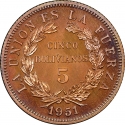You are about to finish your registration. Please check your mailbox (including spam folder). There should be a letter with a confirmation link. Check setting to make sure that your e-mail address is correct.
Send letter again
Obverse

|
The coat of arms of Bolivia. REPUBLICA DE BOLIVIA |
|---|---|
Reverse

|
Caduceus above a wreath of 2 olive branches divides denomination, date below surrounded by the mint and privy marks. CINCO CENTAVOS |
| Edge |
5 Centavos
KM# 173 Schön# 5
Characteristics
| Material | Cupronickel |
| Weight | 2.5 g |
| Diameter | 20 mm |
| Thickness | 1.17 mm |
| Shape |
|
| Alignment | Coin |
| Alt # |
|
| Mint |
Paris Mint (A)
|

